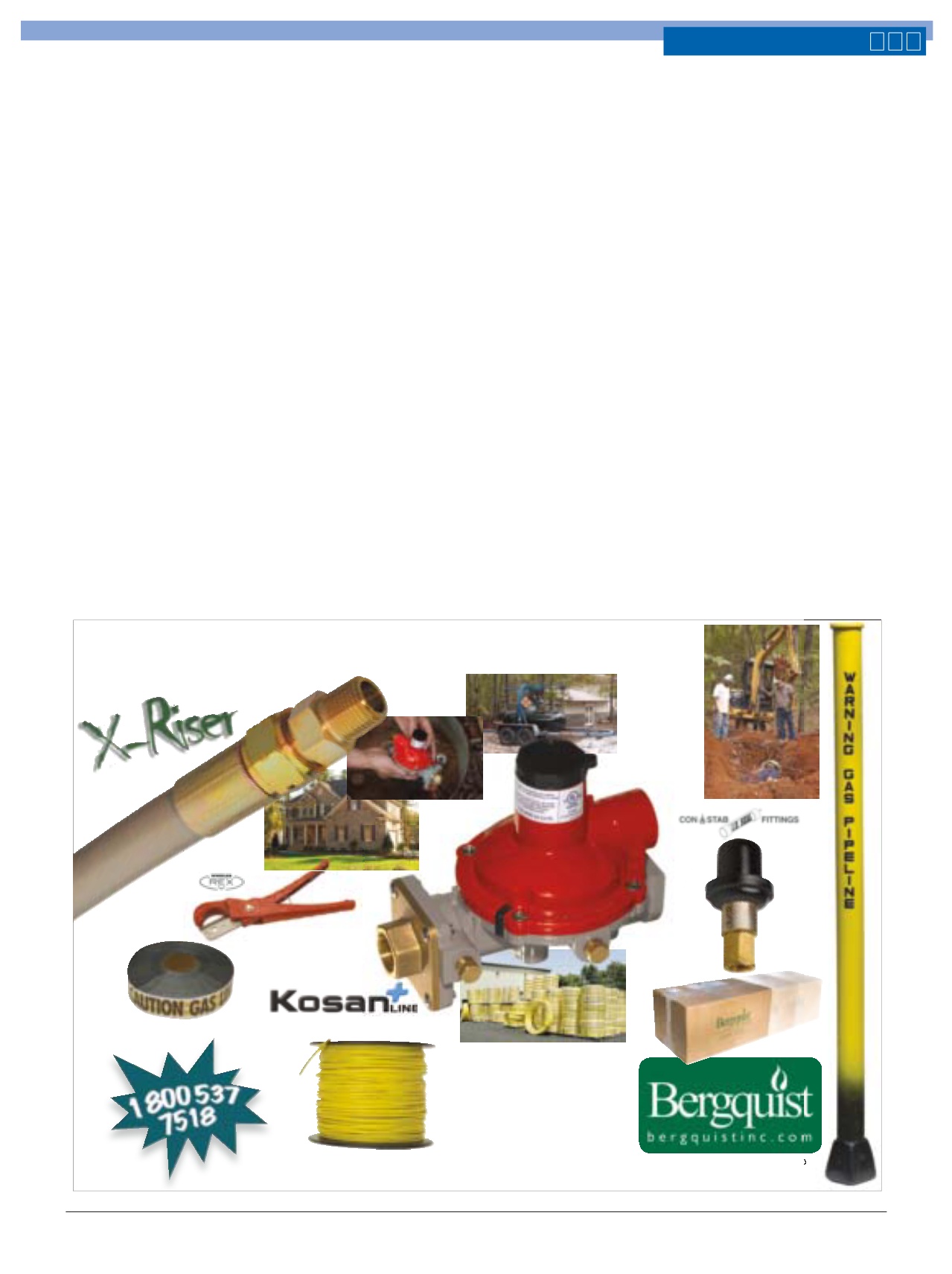
September 2013 • 19
Your questions answered by the people
who know propane equipment.
5 0TH A N N I V E R S A RY
Bergquist has tons of the
latest tank setting gear. Our
product specialists make
sure any job anywhere goes
really smooth. Call us today
at 1 800 537 7518 and we
will get you the right parts
fast. We ship everywhere.
TRACER TAPE
TRACERWIRE
SNIPPER
Bergquist is tank setting.
MARKER
Venting
Manufacturers Discuss Residential Venting Solutions
Oil & Energy
recently reached out to
ventilation manufacturers with questions
about residential venting and combustion
air. Here are our questions, with responses
from Field Controls and Tjernlund.
Please assess the importance of
bringing fresh air into a tightly sealed
home.
Field Controls:
As you know,
ASHRAE 62.2 ventilation standard man-
dates a certain number of air changes per
hour in a structure. The reasons are many:
Stale air is a potential health risk, since
germs (bacteria, viruses and the like) can
thrive and multiply inside a home without
adequate ventilation. Likewise, mold
growth is more likely when fresh air is
lacking. Outside air has been exposed to
the sun’s germ killing UV rays and naturally
contains fewer contaminants than stale air
that continually circulates in the home. The
EPA says indoor air can be up to 100 times
more polluted than outdoor air and ranks
indoor air pollution as one of the top five
health risks in America.
Tjernlund:
The risks are excess moisture,
carbon-monoxide gas, radon gas and energy
efficiency loss of fuel burning equipment.
Allergies and general stuffiness, as well.
How can a contractor determine if
a particular home needs a ventilation
solution?
Tjernlund:
ASHRAE 62.2. Also,
a homeowner may complain to a contractor
about a particular issue and not realize that
it can be solved with fresh, outdoor air. A
dehumidifier can solve basement moisture
issues, but exchanging basement air with
fresh outdoor air may also solve the issue
more cost effectively – fans use 50 watts,
while the dehumidifier uses 1,000 watts. An
additional air conditioner may appear to be
needed, but, a whole house fan may do the
trick just as well.
Field Controls:
Tests range from simple
to expensive, but the truth is just about
every home built since 1985 or any home
that has been “weatherized” with new win-
dows, doors, and caulking, needs to have a
reliable source of fresh air ventilation. This
is especially true for homes in climates that
don’t allow for windows and doors to be
open a significant portion of the time.
What strategies are available to
contractors?
Field Controls:
With forced
air systems, a contractor can connect the
central system to outside air by installing an
air intake hood through the outside wall and
ducting it to a fresh air damper (such as the
Field FAD-5). The damper opens and closes
on a regular schedule to bring air into the
system where it should be filtered and mixed
with conditioned air prior to circulation. The
state of the art option, which can be used in
forced air as well as hydronic systems, is the
installation of an HRV or ERV system. HRV
(Heat Recovery Ventilation) is recommended
in colder climates. An ERV (Energy Recover
Ventilation) is recommended for southern
climates with more humidity. Each is a bal-
anced system, meaning that the exact volume
of fresh air brought in from the outside is
matched by stale air being exhausted from the
dwelling. Each model uses an energy transfer
core to temper incoming air for maximum
comfort and efficiency. Field Controls offers
two models of HRV and one ERV.
Tjernlund:
Some contractors will duct
to the outdoors on a warm air system and
Continued …


